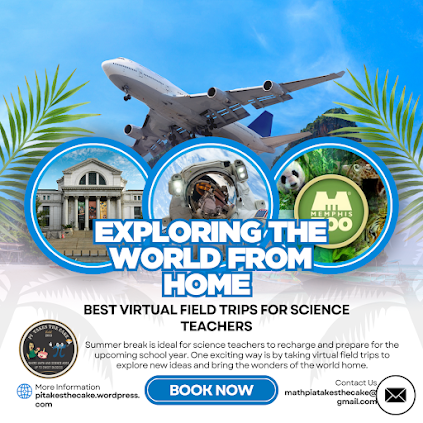Exploring the World from Home: Best Virtual Field Trips for Science Teachers
Summer break is the perfect time for science teachers to recharge, explore new ideas, and prepare for the upcoming school year. One exciting way to do this is by taking virtual field trips, which can bring the wonders of the world right into your home. These virtual experiences not only provide valuable learning opportunities for teachers but also offer engaging content that can be integrated into your classroom lessons. Here are some of the best virtual field trips for science teachers to explore this summer.
1. Smithsonian National Museum of Natural History
The Smithsonian National Museum of Natural History offers an incredible virtual tour that allows you to explore its extensive exhibits from anywhere in the world. The tour includes detailed views of exhibits on dinosaurs, ocean life, and human origins. This resource is perfect for gaining inspiration for lessons on biodiversity, evolution, and geology.
Explore the tour: Smithsonian National Museum of Natural History
2. NASA’s Virtual Tours
NASA provides a variety of virtual tours that take you behind the scenes of their facilities and missions. Explore the Kennedy Space Center, the Hubble Space Telescope’s control center, and even the International Space Station. These tours are excellent for sparking interest in space science and technology in your students.
Explore the tours: NASA Virtual Tours
3. The Nature Conservancy’s Nature Lab
The Nature Conservancy’s Nature Lab offers interactive virtual field trips focused on ecosystems, conservation, and the environment. These trips include visits to coral reefs, forests, and urban environments. They come with accompanying lesson plans and activities, making them a great resource for teaching environmental science.
Explore the lab: Nature Conservancy’s Nature Lab
4. Google Arts & Culture: Natural History Collections
Google Arts & Culture provides access to a wide range of natural history collections from museums around the world. Explore detailed images and information on fossils, minerals, and various species. This platform also includes interactive features and virtual tours of famous museums and landmarks.
Explore the collections: Google Arts & Culture: Natural History
5. Monterey Bay Aquarium
The Monterey Bay Aquarium offers live cams and virtual tours of its exhibits, providing a close-up look at marine life. Watch sea otters, sharks, and jellyfish in real-time, and explore their diverse habitats. This resource is perfect for lessons on marine biology and ocean ecosystems.
Explore the aquarium: Monterey Bay Aquarium Live Cams
6. Memphis Zoo Live Cams
The Memphis Zoo offers a captivating glimpse into the lives of various animals through its live cams, allowing you to observe their behaviors and interactions in real-time. This virtual experience brings the wonders of the animal kingdom directly to your home or classroom, making it an excellent resource for teaching and learning about wildlife.
The live cams feature a variety of animals, including pandas, lions, and elephants, showcasing their habitats and daily activities. Watch as pandas munch on bamboo, lions lounge in their enclosures, and elephants play and interact with each other. These live feeds provide a unique opportunity to study animal behavior, habitats, and the importance of conservation efforts.
Integrating the Memphis Zoo live cams into your teaching can enhance lessons on zoology, ecology, and conservation. Students can observe animals in real-time, conduct behavioral studies, and discuss the role of zoos in protecting endangered species. This virtual field trip offers an engaging and educational experience that brings the wild world of animals closer than ever before.
Explore the Memphis Zoo Live Cams: Memphis Zoo Live Cams
Integrating Virtual Field Trips into Your Teaching
Virtual field trips offer a wealth of information and engaging content that can be easily integrated into your science curriculum. Here are some tips for using these resources in your classroom:
- Interactive Lessons: Use virtual tours as the centerpiece of interactive lessons where students can explore and discuss what they observe.
- Supplementary Material: Pair virtual field trips with hands-on activities, experiments, or projects to reinforce the concepts learned.
- Student Presentations: Have students take virtual tours independently and present their findings to the class, fostering research and presentation skills.
- Cross-Curricular Connections: Integrate virtual field trips into other subjects, such as geography or history, to create a multidisciplinary learning experience.
Virtual field trips are a fantastic way to bring the world into your classroom, providing students with unique learning experiences that inspire curiosity and a love for science. This summer, take some time to explore these incredible resources and discover new ways to engage your students in the wonders of the natural world.
Happy exploring!

Comments
Post a Comment